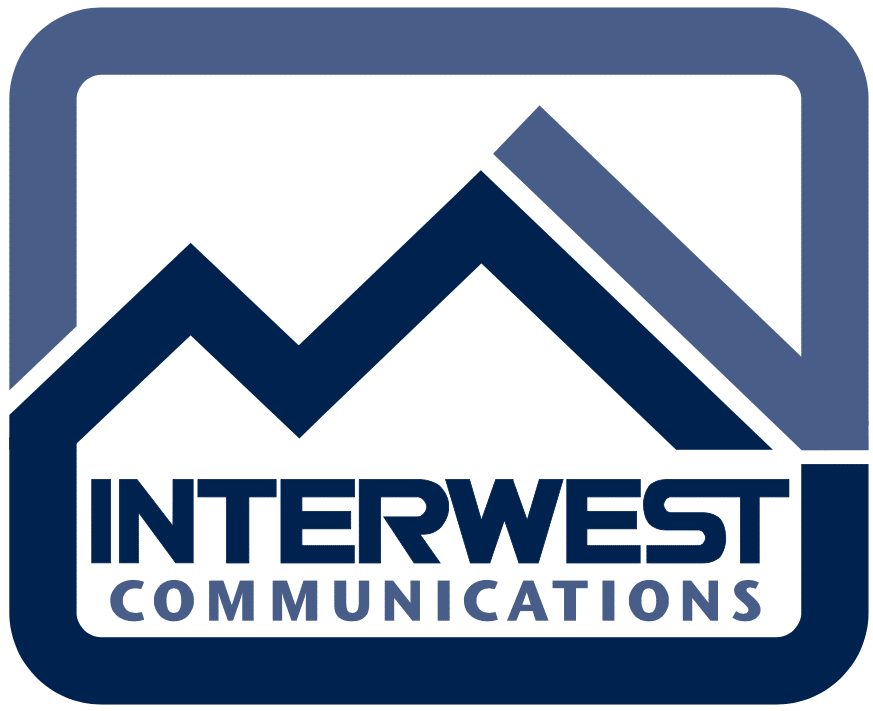- April 3, 2025
- Posted by: Interwest Communications Team
- Categories: News, Uncategorized
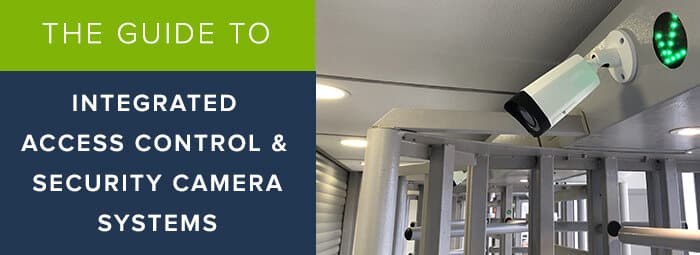
Originally posted on July 30, 2020 @ 2:37 am

The Guide to Integrated Access Control & Security Camera Systems
Individually, security camera systems and access control systems are some of the best forms of security for most businesses with physical locations and assets to protect. Both of these security systems monitor who is accessing a business’s properties, and are used to control and restrict access to a business’s data, property, and assets. When these two security systems are integrated, businesses have better security and more protection against losses and damages.
Integrating access control with camera systems provides a centralized security system that is more effective at monitoring sites, preventing intrusion, recording and tracking activities and data, and recovering from a security breach.
Whether you’re considering installing a security system with integrated cameras and access control, or integrating existing systems, Interwest has the resources to help. We’ll walk you through the basics of the two security systems as well as the benefits of cameras integrated with access control.
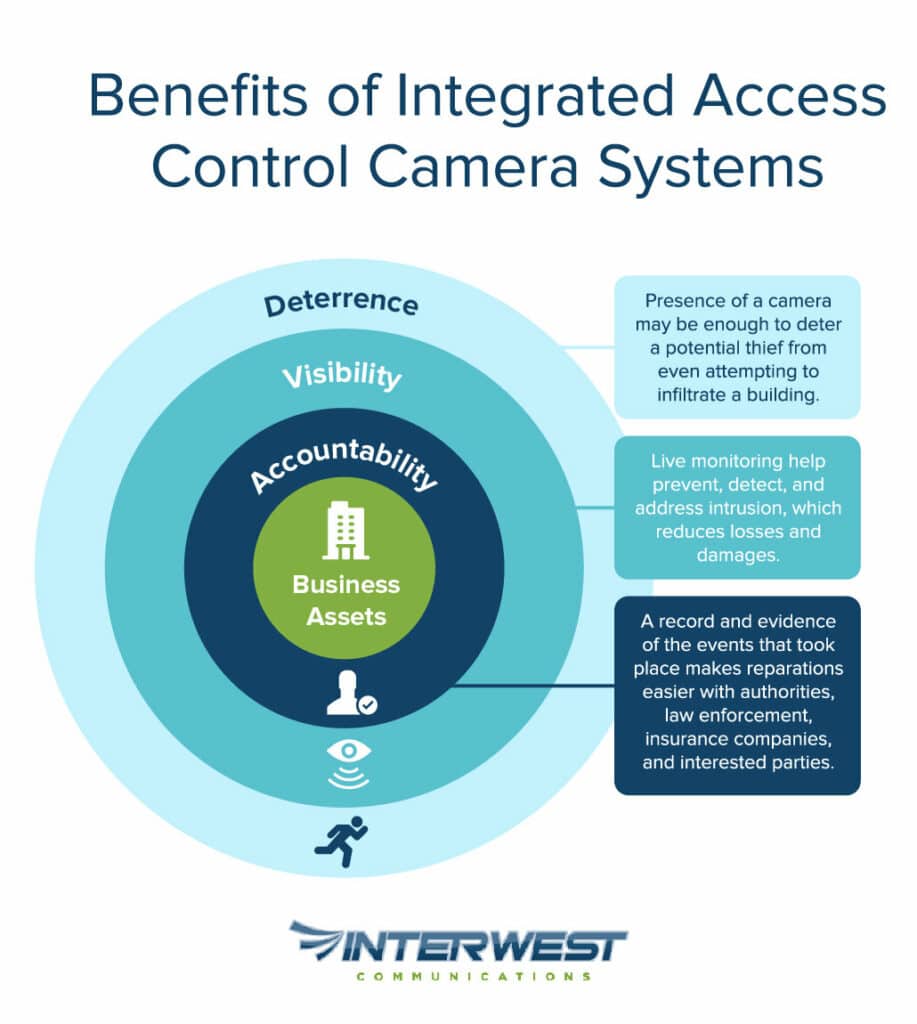
Benefits of Integrated Access Control & Camera Systems
So, why should a business use an integrated access control camera system? Access control integrated with camera systems offer accountability, visibility, and deterrence— three important components for protecting your business.
1. Accountability
When it comes to managing intrusions and security breaches, video records are powerful pieces of evidence, far more powerful than a data point on a spreadsheet. Having video of the moment a door was opened at your site provides insight into what was going on at that time.
2. Visibility
Surveillance cameras allow a security officer or site administrator to actually see what is happening at the various entrances and exits of a site, allowing that person to monitor a larger area, which reduces losses and damages.
3. Deterrence
A surveillance camera is far more noticeable to a potential troublemaker than a card reader or a locked door. In some cases, the mere sight of a camera may be enough to deter a potential thief from even attempting to infiltrate a building.
What kinds of businesses would benefit from camera and access control integration?
If you’re still on the fence about whether your business would benefit from surveillance video integration with access control, here are some examples of sites that would benefit from integration:
- Large sites with hundreds of employees, where it’s impossible to know everyone by face.
- Sites with highly-sensitive areas, where any breach requires immediate action.
- Sites in multi-tenant buildings, where it’s easier for an unauthorized person to blend in with a crowd or to piggyback through a locked door.
- Sites seeking a professional, visible security solution to deter potential threats.
Conversely, some sites might not require it, for example:
- Sites where the budget is tight, as adding surveillance cameras may take away funds that could be better used getting a feature-rich door control system.
- Small sites where everyone knows everyone.
- Sites where card readers are combined with biometric scanners, as these scanners aren’t as susceptible to lost or stolen access credentials.
Most businesses should have access control systems in place, whether it’s physical property or sensitive data they need to protect, but not every business requires the use of security cameras. Sometimes, circumstances change, and a business needs to adapt.
If your business is expanding, and didn’t need a camera system before, but does now, you might be wondering how to integrate them into the existing system. Doing so starts with knowing the components of each system and how they work together.
What are access control systems?
Access control systems are the security practices and technology that restrict access to businesses’ data, property, and assets. They are important to mitigate the risk of unauthorized access and loss of property and sensitive information, and damages to businesses.
What is a security camera system?
Camera systems or, video surveillance, is the use of the internet or closed-circuit televisions (CCTV), and cameras to monitor premises. Cameras serve a vital function, preventing intrusion and alerting the organization of intrusion that’s taking place. Video surveillance systems are effective to protect physical property, assets, and people at any time, and are suitable for businesses of any size with physical properties to secure.
Camera systems can be an integrated part of access control systems for even better security.
Cameras at doors and windows, and around and inside perimeters, give additional protection against unauthorized access. This extra set of eyes and real time monitoring means you have an additional layer of security for each step of access control.
One of the benefits of video surveillance is that in the event that the security measures fail to prevent losses or damages, there will be a record and evidence of the events that took place, which makes resolving damages easier with authorities, insurance companies, and interested parties.
Video surveillance systems are effective to protect physical property, assets, and people at any time, and are suitable for businesses of any size with physical properties to secure. Many security systems that have a camera system and access control will frequently already have the two integrated.
If cameras weren’t already integrated into the access control system, you can integrate them as an upgrade or part of an expansion. When adding and integrating one of the two systems to an existing system, it’s important to know the components and how they are or are not compatible.
How do access control systems with integrated cameras work?
A number of components and practices make up access control systems and security camera systems and integration of the two systems is a more efficient way to manage the two and increase the security of your business.
Understanding how integrated access control camera systems work, starts with understanding the individual systems and their components.
The Role of Cameras in Access Control Systems
Cameras come in a variety of shapes, sizes, and with many different types of connections available. Some access control readers/controllers come with a camera built in. These models are specifically designed to record activity and verify identity and the time and point of access. They have a limited range of view and are meant to monitor the immediate area surrounding a door rather than a large zone.
There are a number of camera models and features, including smart cameras, voice integrated cameras, PTZ cameras, thermal cameras, day/night cameras, bullet cameras, dome cameras, and indoor/outdoor cameras. Many different types of cameras can be integrated with access control systems and offer a number of benefits:
The Role of Video Recorders Integrated with Access Controls
All the cameras in a given system require a central video recorder to transmit and archive the footage they capture. Access control systems can be integrated with either CCTV (analog) cameras or IP cameras. Most integrated access control cameras systems use IP cameras because of the flexibility and ease of integration they offer, in addition to their analytics.
Integrated camera and access control systems can replace and eliminate the need for a separate recorder with the use of VMS and IP cameras. The advantages that an integrated access control camera system and VMS offers make up for common limitations of different types of recorders, in addition to streamlining the user interface for easier management of security.
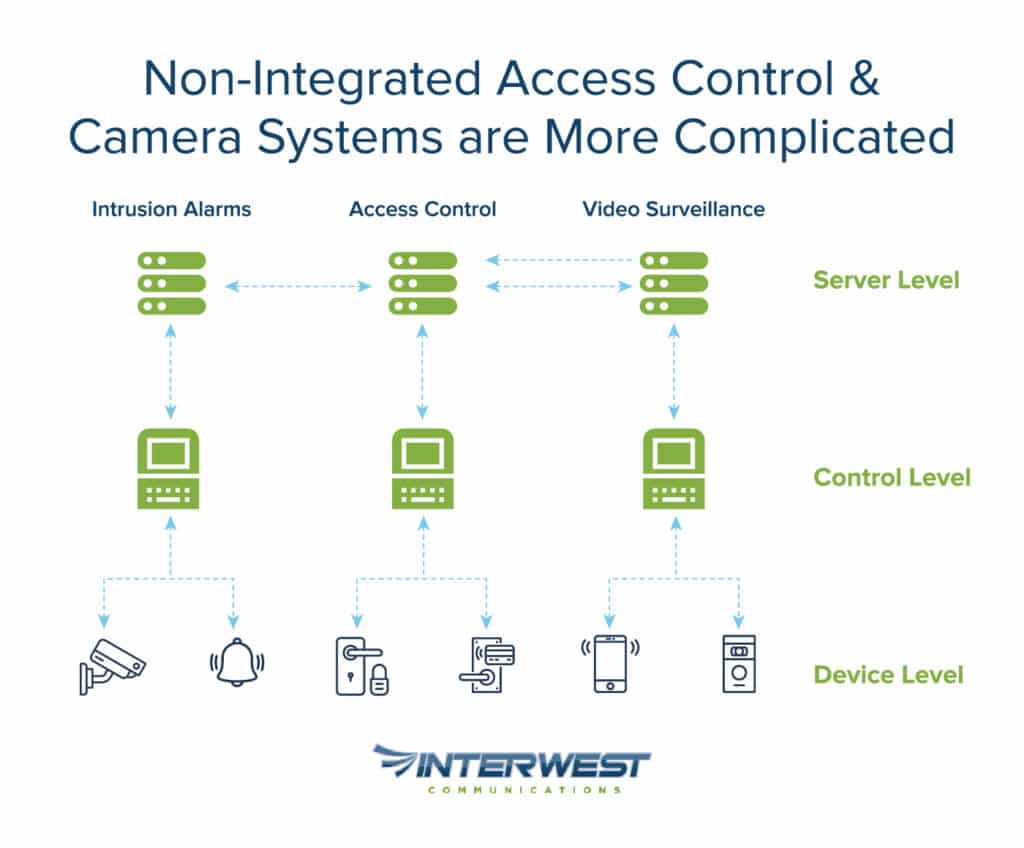
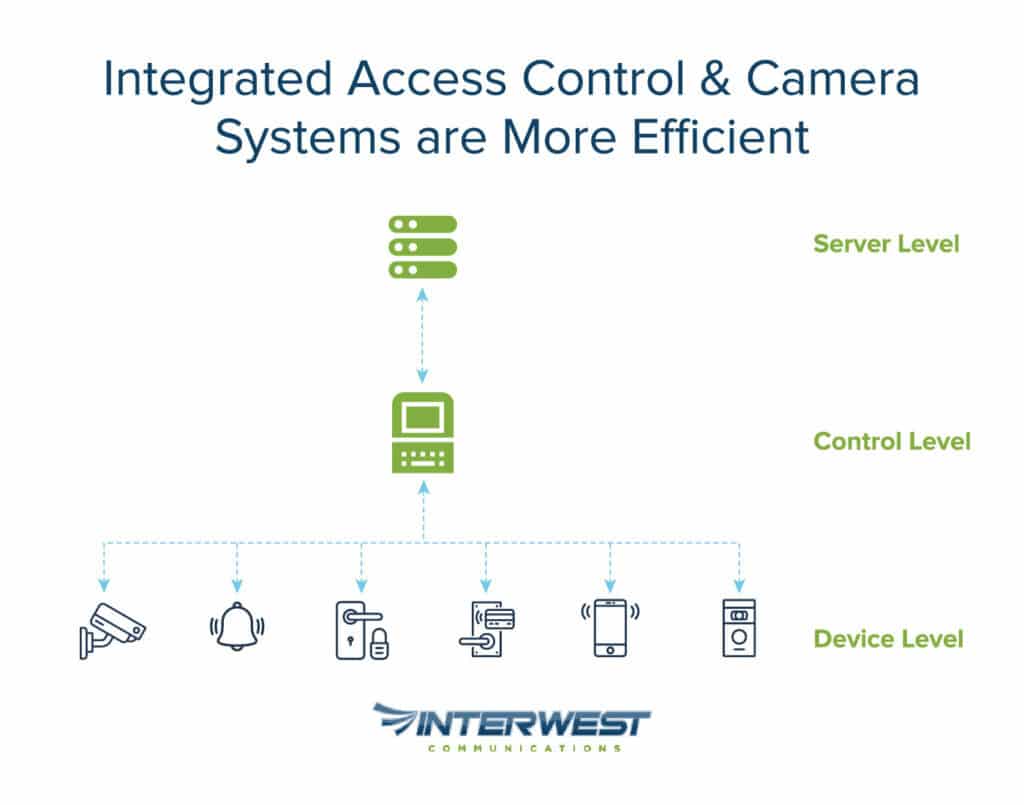
4 Advantages of Using VMS & Integrating Cameras with Access Control Systems
Camera systems integrated with access control have a lot of advantages that both increase the effectiveness of a business’s security system, while also simplifying it.
1. Video Analytics
Analytics can help improve security by tracking activity and data, which a business can use to catch holes in the system, and figure out the best way to effectively and efficiently use their resources. It’s also useful when your business is closed and you want to be alerted if someone is moving around inside the premises. You can configure the system to flag events like this and send notifications directly to your smartphone, along with recorded footage of the event. Some systems also offer a direct, one-touch connection to local law enforcement.
2. Storage Capacity
An important and simple question for any security camera system: how much storage will you need? However, the answer can get a bit more complex. Usually how much storage you’ll need will depend on:
- The number of cameras in your system
- Each camera’s resolution
- The amount of archived footage you intend to store and how long you plan to keep recorded footage.
If you have many cameras shooting in high resolution, the footage is going to eat up storage space quickly. You can set a video recorder to overwrite the oldest footage once you reach the system’s capacity, but the system could overwrite archived footage that you still need.
If you’re running a large system with high-quality cameras, you’ll want to scale up your video recorder’s storage capacity. There are several tools online that can help you calculate how much storage space you’ll need based on the details of your system. It’s wise to maintain a bit of a cushion beyond that calculated number, letting you store any particularly interesting footage you might need to refer to.
An integrated access control camera system can significantly reduce the need for storage capacity. The camera system can be configured to start recording only when activity is detected, such as the use of a proximity card to open a door, instead of constantly recording hours of footage that a business may not need.
3. Cloud Storage
You can store recorded video in the cloud in addition to on your video recorder. There are a few distinct advantages to doing this, including remote access to your videos and higher storage volume. It’s important to upload large video files in a way that won’t eat up all your bandwidth and slow down your network. This can be done by either scheduling video uploads to the cloud or uploading them after peak business hours.
Storing videos in the cloud means that even if your hardware is damaged, stolen or tampered with, you’ll still have access to your video archives. VMS commonly include access to cloud storage because of the sheer amount of data that the access control and camera systems capture.
4. Compression
Compression eliminates unnecessary data from the footage transmitted to your video recorder to save space. Two of the more common compression techniques for high-definition video are MJPEG and H.264. You can also use MPEG4, but the quality tends to be lower than that of MPEG4’s aforementioned counterparts.
Compression methods are relatively complex and vary in their applications depending on your needs and hardware. VMS usually compress data as a part of their normal function, eliminating the concern about not having enough storage capacity for all your important data.
Interwest for your Business Security Needs
Integrated camera and access control systems streamline security for more accountability, visibility, and deterrence. Whether you’re considering installing a security system with integrated cameras and access control, or integrating existing systems, doing so will provide more protection for people, property, and data.
If you’re looking to add access control and camera systems to your business, Interwest Communications has the tools and equipment you’ll need to secure your site, as well as the expert staff to help you set it up. For more information, you can check out our blog for helpful resources, or get in touch with us today.
